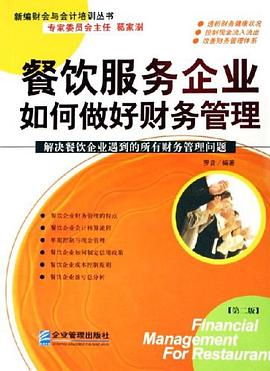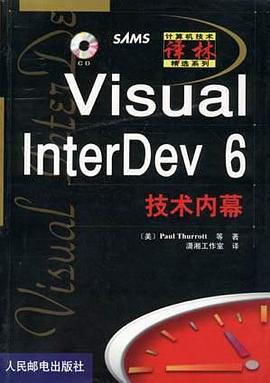CHAPTER 1 THE ROLE OF MARKET RESEARCH
The Objective of Our Study
Market Research in Management
a) To recognize marketing opportunities and problems
b) To find causes of problems
c) To monitor and evaluate the marketing performance
d) To predict future conditions
e) To do market research for governments
When is Market Research Needed?
a) Time constraints
b) Availability of data
c) Nature of the decision
d) Benefits versus costs
Marketing Information System
a) Recurrent information
b) Monitoring information
c) Requested information
d) Multinational marketing information system
CHAPTER 2 USING RESEARCH SUPPLIERS
Making use of Market Research
Using Research Agency
a) Expertise
b) Language
c) Cost effectiveness
d) Objectivity
How to Choose An Agency
a) Types of research agency
b) Selection procedure
The Contract with the Agency
Working with Agencies
CHAPTER 3 SCOPE OF RESEARCH
Research on Environments
a) Culture
b) Politics and government regulations
c) Economics and techniques
d) Climate and geography
e) Competition
Research on Marketing Demand
a) Consumption
b) Derived demand
Research on Marketing Practice
a) Product
b)Sales distribution and transportation
c) Promotion
d) Pricing
CHAPTER 4 RESEARCH PROPOSAL
Research Objectives
a) Situation analysis
b) Model development
c) Statement of research objective
Planning a Research Design
a) Selecting the data collection method
b) Planning a sampling
c) Data gathering
d) Data processing
e) Conclusions and report preparation
Research Budget and Time Schedule
Appendix to Chapter 4
An example of Research Proposal
CHAPTER 5 SECONDARY DATA RESEARCH
The Nature of Secondary Data
Secondary Data Evaluation
Sources of Secondary Data
a) International data sources
b) External data sources
(1) Computerized data bases
(2) Association
(3) Syndicated services
(4) Other published sources
(5) Liberary
(6) Foreign missions
(7) International organizations
(8) Government agencies
(9) Chambers of commerce
(10) Banks
Market Screening Through Secondary
Data Research
CHAPTER 6 PRIARY DATA RESEARCH
Survey Methods
a) Survey problems
b) Classification of survey
(1) Classifying surveys on a temporal basis
(2) Classifying surveys on a communication basis
c) Types of survey
(1) Telephone interviews
(2) Mail interview
(3) Personal interview
(4) Computer interview
(5) Group interview
Observation
Experimentation
CHAPTER 7 QUESTIONNAIRE DESIGN
What is Questionnaire?
Questionnaire Construction Procedure
a) Determine the specific information
b) Determine the types of individual questions
(1) Is the question necessary?
(2) Is it within the experience of respondents?
(3) Can the respondent remember the information?
(4) Will the respondent have to make a big effort to
answer the question?
(5) Will respondents give the information?
(6) Are several questions needed or is only one ques-
tion enough?
c) Determine the type of question
(1) Open-ended question
(2) Multiple-choice question
(3) Dichotomous questions
(4) Rating scales
(5) Ranking method
d) Determine the wording of questions
e) Determine question sequence
Determine Layout and Reproduction
CHAPTER 8 SAMPLING DESIGN
What is Sampling?
Advantages of smpling
(1) Cost saving
(2) Time reducing
(3) Partly inaccessible population
(4) Destruction of units
(5) Greater accuracy
(6) Samplirig errors and data collection error
Sampling process
a) Denning 01 popuiation
b) Defining a frame
c) Sampling Units
d) Selection of Sampling Method
Sampling Method
a) Probability samples
(1) simple random samples
(2) systematic samples
(3) stratified samples
(4) cluster samples
b) Nonprobability samples
(1) convenicnce samples
(2) judgment samples
(3) quota samples
The Sample Size and Cost
CHAPTER 9 DATA PROCESSING
Controlling Field work
a) Selection of field works
b) Briefing sessioh for interviewers
c) Supervision of field workers
Transforming Raw Date into Information
a) Editing
b) In-house editing
c) Coding
Data A'nalysis
a) One way frequency distribution
b) Cross tabulation
c) Data analysis and interpretation
Appendix to Chapter 9
An Example of Coding Book
CHAPTER 10 RESEARCH REPORT
Written Report
a) Preparing the written research report: focus on the
Chinese audience
(1) Clearly present the objective of the study
(2) Minize the reporting of the technical aspects of
the project
(3) Develop an interesting writing style
(4) Use visual aids and round numbers
b) Forms of reports
(1) Title page
(2) Table of contents
(3) Summary of findings and recommendation
(4) Introduction
(5) The body
(6) Conclusions and recommendations
(7) Appendix
Oral Report
a) Preparing the oral report
b) Delivering the oral report
c) Graphic presentation of the results
(1) Pie chart
(2) Line chart
(3) Stratum chart
(4) Bar chart
(5) Bar chart variations
· · · · · · (
收起)






















